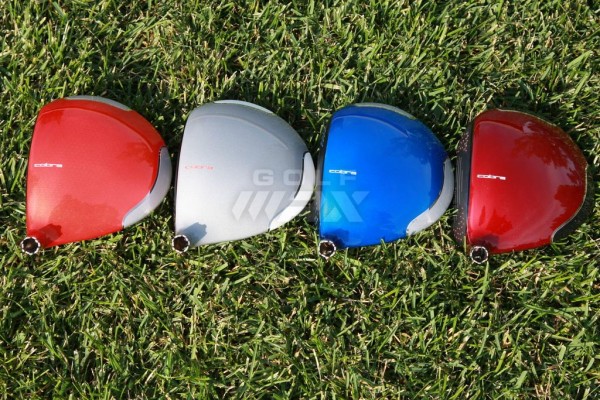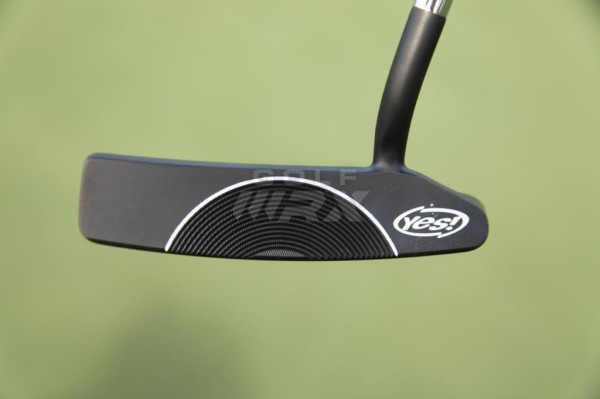Opinion & Analysis
“We are past the time of superior and inferior product lines”

What was true, still is true and is likely becoming even more true is this: equipment doesn’t make any difference. Or perhaps more correctly, when analyzed with a single criteria of performance, the consumer has more choices now than ever before, all of which are top-shelf options.
You may decide to file that little bit of wisdom in the “duh” file. I know I’m treading on hallowed ground here and I’m certainly not one to claim I haven’t fallen victim to a marketing scheme or two. But if we look at the golf industry at a macro level, the real story is parity. No one makes a bad product and in fact, pretty much every major original equipment manufacturer turns out high-quality products worthy of play by the most demanding players in the world: touring professionals.
We are past the time of superior and inferior product lines. Many of us still remember Phil Mickelson’s back-handed compliment to Tiger Woods calling Tiger’s Nike equipment “inferior.” But that was 10 years ago, and my how times have changed.
Now demand for certain product lines is now largely a function of perception, customization and past behavior. As such, we’ve also witnessed market consolidation and OEM’s playing their own version of “anything you can do, I can do pretty much the same thing.” Call it shared technology or imitation, either way we certainly in a place where “it’s all good.”
Golf Balls
In late 2000, Titleist released its ProV1 ball in Las Vegas. Its game-changing ball marked a paradigm shift from wound-core balls to solid-core balls. Billy Andrade won that event in Vegas and the race to catch up to Titleist was on. Unfortunately, for all would-be suitors, Titleist was well down the road and to this day still holds nearly 50 percent of the ball market worldwide. It’s a pretty nice complement when TaylorMade CEO Mark King commented, “We’re not going to get into a fight with Titliest, at least not for the ball. It’s what they do. They would defend it till their death.” Enough said.
Don’t let the market dominance figures lead you to believe that the performance difference is anything but razor thin. Last year’s FedExCup winner, Brandt Snedeker, is just fine with his Bridgestone Tour B330 ball and nearly $15 million in 2012 earnings. Bridgestone has been producing golf balls since 1935 and most people don’t realize that Nick Price won the 1994 PGA Championship and 1994 British Open using a solid core ball from Precept (division of Bridgestone). Currently, Bridgestone, the No. 1 ball fitter in golf, offers four Tour-level solid core balls.
Callaway got into the ball market in 2000 by hiring Chuck Yash, formerly with TaylorMade. During the last decade, Callaway has expanded its offerings partnering with aerodynamic specialists at Boeing to determine efficient and effective dimple patterns. Currently, Callaway offers a Tour-level ball for higher swing speeds (Hex Black) and one for lower swing speeds (Hex Chrome). They’ve recently also added the HEX Chrome +, which fits in between.
Wedges
Inspired by the personal airplane of tycoon Howard Hughes, Gene Sarazen developed the blueprint for the modern sand-wedge. This was the late 1920s. In 1988, Cleveland golf introduced its fifth generation wedge, the 588. They looked basically the same. Now, most OEM’s (Titleist, Cleveland, Nike, Mizuno, etc.) offer multiple lofts, bounce options, grinds and finishes.
For those desiring a wedge-experience once reserved only for Tour pros, Titleist offers its WedgeWorks program. Wedge guru Bob Vokey and his team will build you a one-of-a-kind wedge with your choice of loft, grind, finish and stampings. Titleist launched this initiative in August of 2011, and soon thereafter Cleveland followed suit with its iteration, aptly named “My custom wedge.” Of course, this level of service isn’t anything new for customers of Scratch golf, the boutique brand which started in 2003 and whose motto “Your game customized” defines their entire business model.
Irons
There have always been myriad options for players wanting maximum workability and minimum forgiveness. Like many of you, I have fond memories of my Wilson staff blades, Hogan Apex blades, Mizuno MP-29s and well, you get the idea. Fast forward to the new millenium:
In 2008, Titleist introduced the AP2 (Advanced Performance) line of irons, which endeavored to broach the players category of irons buy offering tour level workability while maintaining the solid feel of a forged iron and increased forgiveness on mis-hits. In order to accomplish this, Titleist used multiple materials including forged steel (feel), tungsten weights (increased MOI) and an elastomer insert (vibration dampening and optimal sound). According to Titleist, the result is an iron with great feel, Tour-level workability and a traditional players appearance from address or in laymen’s terms, an iron any really really good golfer will love.
Titleist got the early jump in the category, but here’s a few products from other OEMs that are in the same category as the AP2’s:
- Adams CMB
- Callaway X Hot Pro
- Cobra AMP Forged
- Mizuno JPX-825 Pro
- Nike VR_S Forged
- Ping Anser Forged
- TaylorMade Rocketbladez Tour
Fairway Woods
Whether you call it a fairway wood or a “fairway metal,” this category was once more about reliability than distance. It was in this environment that Tour Edge Exotics found a niche market and a cult following. The “CB” series of fairway metals featured a titanium combo-brazed face and hyper-steel body, both attributes still found in the fifth edition (CB5) of the player-oriented fairway wood. The company touted it as the longest fairway metal available, even offering a money-back guarantee. And it’s easy to offer a guarantee when you’re right. However, without a connection to a major OEM and a comparatively higher price tag, the company simply couldn’t access a majority of this newfound market.
Enter TaylorMade “RocketBallz,” or RBZ. They debuted in 2012 and promised golfers 17 yards of increased fairway metal distance. Heck, Phil Mickelson the face of Callaway, even put an RBZ 3 wood in play until Callaway could come up with something to kick it out. This year, RBZ Stage 2 fairway woods are promising 10 more yards on top of the 17 from last year, an assertion the OEM no doubt believes is “ballz-ier” than before. In addition, Callaway promotes its new X Hot line of fairway metals to be “longer from everywhere.”
Also, building on momentum from 2012 and its acquisition by TaylorMade, Adams has fixed a couple quality control issues in its distance fairway line (XTD) with the Super LS series that have a characteristic time (CT) that approaches 250. The legal limit as set by the USGA is 256.
Hybrids
In 2002, TaylorMade produced one of the first hybrids, the Rescue Mid, that gained significant acceptance on professional tours. But it has been Adams Golf that has built a loyal and significant following on the senior PGA Tour and now is the most played hybrid worldwide.
Right now, it’s impossible to find an OEM that doesn’t offer some kind of hybrid or rescue in its current line. They’re longer, more attractive and more versatile than previous models across the board.
Driver
TaylorMade introduced MWT (moveable weight technology) in 2004 with the R7 quad driver. Naysayers labeled the club gimmicky and over-hyped marketing snake oil. Such armchair analysts general fail to mention that the R7 was used in 50 percent of victories on the PGA Tour that year. While this was a significant departure from the rest of the driver industry, it was nothing compared to what TaylorMade did in 2011. Call it the great golfing whiteout. TaylorMade introduced the R11 with a matte white club head. Black was out and white was in. It almost seemed antithetical, or sacrilege or something, but it was definitely different.
The R11 also had MWT, ASP (an adjustable sole plate) and the ability to change effective loft, lie and shaft via its FCT (Flight Control Technology). The gauntlet had been laid down.
Again, skeptics decried the new white paint and called it uglier than sin; a fad with less shelf-life than a Kardashian marriage. TaylorMade went on to lead world-wide usage in 2011, an exclamation point on a decade of dominance. In 2013, TaylorMade debuted the its R1, a white-headed driver with crown graphics. Also into colored drivers is Cobra (blue, silver, white, red, black and orange), Nike Covert (Red), Adams LS (white) and Callaway (matte grey).
Putter
Putters are as individual as the player themselves. They’re function over form, more art than science — or so we thought. Patented on March 21, 1967, the Ping Anser putter is the most emulated putter design of all time. Scotty Cameron has had success with its similar Newport and Newport 2 putters, while Odyssey calls its version simply #2. That being said, the Anser is still the bar, still the blueprint to which all similar putters will be compared. It’s kind of like when a brand becomes so powerful, you forget to remember it’s a brand; think Band-Aid, Kleenex, ChapStick, Q-Tip and Anser.
Lately, there’s been a trend of “grooved” putter faces. What began in 1995 with C-Groove technology lead by European putter designer Harold Swash, has now led to textured or “grooved” putter faces from nearly every manufacturer.
The Takeaway
No matter how you slice this pie or skin this cat, each and every major OEM is gold-list worthy in the court of public opinion, and more importantly on the course where incomes are earned. Contrarians will say that equipment contracts are all about money, and to a degree this is true. However, money in the absence of performance simply does not jive in this game of meritocracy. The player who chases short term money in place of long term success will only realize the former. As much as some of us like to debate the minutia of spec tolerances, grinds, finishes and the endless list of what differentiates one product from another, the simple truth is you and I would have the same handicap regardless of where our OEM allegiances lie.
We know there are lies, damn lies and statistics, but consider this:
World Rankings (as of March 1, 2013) by primary OEM sponsor
1. Nike
2. Nike
3. Mizuno
4. Bridgestone
5. Ping
6. TaylorMade
7. Titleist
8. Bridgestone
9. Ping
10. Cobra
11. Ping
12. Callaway
13. Titleist
14. Nike
15. Titleist
16. Titleist
17. TaylorMade
18. Srixon/Cleveland
19. Srixon/Cleveland
20. TaylorMade
21. Ping
22. TaylorMade
23. Nike
24. Callaway
25. TaylorMade
I know the sample size isn’t ideal, so take it for what it’s worth, but based on the top-25 players in the world:
4 play Nike
2 play Srixon/Clevland
1 plays Mizuno
2 play Callaway
5 play Taylor Made
4 play Titleist
4 play Ping
1 plays Cobra
2 play Bridgestone
- LIKE1
- LEGIT0
- WOW0
- LOL0
- IDHT0
- FLOP0
- OB0
- SHANK3
Courses
The BEST hidden gem links courses in the UK & Ireland

Another Open Championship has come and gone and links golf was once again in the spotlight at Royal Troon! For those who have never played a links course (like myself), it sparks a desire to fly across the pond to experience it for ourselves. While a golf trip to the UK or Ireland is a bucket-list item, most people look to play the big-name courses (Old Course, Carnoustie, Lahinch, Royal Portrush,etc.), but don’t realize they can get a similar experience by traveling to some of the lesser known destinations where you will find some of the purest links courses in the world. With this in mind, here are our picks for the best hidden gem links courses you should play when you book a UK or Ireland trip:
IRELAND
We start our list off with a 36-hole club in the Northwest of Ireland, a remote area of the Emerald Isle that is known for its rugged terrain and spectacular scenery. Bordering the Wild Atlantic Way, Ballyliffin is relatively newer (est. 1947) but offers golfers one of the purest links golf experiences anywhere in the country. While not easy to get to, the two courses onsite (Old and Glashedy) are well worth the travel with large dunes shaping the fairways that overlook the North Atlantic Ocean and a myriad of pot bunkers everywhere you look. Even Rory McIlroy believes that “Ballyliffin’s two courses are a must play on any golf trip to Ireland.” and we tend to agree.

How to incorporate Ballyliffin in a golf trip:
Stay:Ballyliffin Lodge, Hotel & Spa
Play: Old Links & Glashedy Links at Ballyliffin, and Old Tom Morris Links or Sandy Hills Course at Rosapenna
The next course on the list is in the Sligo area of the Northwest where we find Enniscrone, roughly 3 hours (by car) south of Ballyliffin. Like many links courses, Enniscrone was originally a 9-hole course when it was opened in 1918 before an additional 9 holes were added 12 years later. In 1970, Eddie Hackett was tasked with redesigning the course to help the two 9-hole courses flow effortlessly into one 18 hole layout. A big feature that can be seen throughout your round here are the towering dunes that shape the course and protect some holes from the ocean winds. Built right out of the landscape of the dunes bordering the sea, the course has a lot of undulation in the fairways and greens with some elevated tee boxes providing unreal views of the natural land.

How to incorporate Enniscrone in a golf trip:
Stay: The Glasshouse Hotel, Sligo
Play: Enniscrone, County Sligo, and Donegal
Additional Courses: Strandhill, Carne, and Narin & Portnoo
Another fantastic gem on the Northwest coast of Ireland is the NEW (2020) St. Patricks Links at Rosapenna Hotel & Golf Links. The land was purchased back in 2012 which was already a 36-hole facility and Tom Doak was brought in to reimagine the property to the layout it currently is today. Large sand dunes shape the front 9 holes before heading back through some more subtle dunes back towards the clubhouse. The course offers elevation changes with some tee boxes sitting atop the dunes offering spectacular views of Sheephaven Bay and beyond. With two other courses and a fantastic hotel on property, this destination is all you could ever ask for.

How to incorporate St. Patricks in a golf trip:
Stay: Rosapenna Hotel & Golf Links
Play: St. Patrick’s Links, Sandy Hills Course , and Old Tom Morris Links (all at Rosapenna)
For our last hidden gem in Ireland, we head 30 minutes north of the country’s capital, Dublin, to The Island Club. Built along rugged terrain and the highest sand dunes on the east coast of Ireland, the Island Club is situated on a small peninsula surrounded by water on three sides providing a difficult challenge, especially with the winds. Founded in 1890, the Island Club continues to be ranked in the Top 10 courses in Ireland and has held some Amateur Championships and Open Championship Regional Qualifiers.

How to incorporate The Island Club in a golf trip:
Stay: The Grand Hotel, Malahide
Play: Island Club, Portmarnock Old, County Louth
Additional Courses: Royal Dublin
SCOTLAND
Located along “Scotland’s Golf Coast” of East Lothian is where we find the classic links of Dunbar. Opened in 1856 with only 15 holes, this is one of the many courses in Scotland that Old Tom Morris had a hand in crafting. Laid out along rocky and rocky terrain, the course is only 6500 yards long and while not long by modern standards, the course requires shot making and proper club selection to play well. The course has held many national and international tournaments including a few rounds of The Open Final Qualifying.

How to incorporate Dunbar in a golf trip:
Stay: No. 12 Hotel & Bistro
Play: Dunbar, Gullane (No.1), North Berwick
Additional Courses: Craigielaw, Kilspindie, Gullane (No.2, No. 3)
The next course on our list brings us to the Scottish Highlands, one of the lesser traveled destinations in Scotland, but still home to some amazing links courses including Cruden Bay! Located 25 miles north of Aberdeen on the east coast of the Highlands, Cruden Bay was opened in 1899, although history would indicate golf has been played at the property since 1791. Another Old Tom Morris design, the course is consistently ranked in the Top 25 of courses in Scotland and it is easy to see why. At only 6600 yards, it is relatively short, but the natural lay of the land provides elevation changes, punchbowl greens, and some large, 3-story high dunes that offer spectacular views for a classic links experience.

How to incorporate Cruden Bay in a golf trip:
Stay: Leonardo Hotel Aberdeen
Play: Cruden Bay, Trump International Links, Royal Aberdeen
Additional Courses: Murcar
We head back to the Highlands just north of Dornoch to where we find Brora Golf Club. Similar to a lot of links courses, Brora opened as only 9 holes in 1891, but that only lasted for 9 years before an additional 9 was added in 1900 before a James Braid redesign in 1924. At just over 6200 yards, this is one of those courses that will make you appreciate links golf in Scotland with cattle and sheep roaming freely around the property. The course is a typical links routing with the front 9 going out and the back 9 coming back to the clubhouse. The defense of the course is the wind (naturally), but the greens are relatively small with pot bunkers standing guard to catch errant approach shots.

How to incorporate Brora in a golf trip:
Stay: Royal Golf Hotel, Dornoch
Play: Brora, Royal Dornoch – Struie & Championship
Additional Courses: Golspie, Tain
Staying in the Scottish Highlands, the last Scotland links gem on the list is just outside of Inverness at The Nairn Golf Club. The narrow fairways are fast and firm leading to decent sized, tricky greens that roll true, but are guarded by devious pot bunkers. The first seven holes play right along the water and with not a ton of elevation changes, spectacular views across the Moray Firth can be seen throughout the course. With fantastic course conditions throughout the season, this fantastic links is an absolute must-play when visiting the Highlands.

How to incorporate Nairn in a golf trip:
Stay: Kingsmills Hotel, Inverness
Play: Nairn, Castle Stuart (Cabot Highlands), Fortrose & Rosemarkie
Additional Courses: Nairn Dunbar, Moray

Golfbreaks by PGA TOUR highly recommends you start planning your trip across the pond AT LEAST 12-18 months in advance in order to secure tee times and hotel rooms over the dates you desire. With more and more people taking up the game of golf, these bucket list trips have already become extremely popular and will continue to gain interest so make sure to start planning early!
RELATED: Open Championship courses you can play (and when the best time to book is)
Editor’s note: This article is presented in partnership with Golfbreaks. When you make a purchase through links in this article, GolfWRX may earn an affiliate commission.
- LIKE19
- LEGIT0
- WOW0
- LOL1
- IDHT0
- FLOP3
- OB0
- SHANK3
Courses
Open Championship courses you can play (and when the best time to book is)

The final major of 2024 is nearly here as the top golfers head to Scotland’s southwestern coast to battle for the claret jug at Royal Troon. Golf’s original major dates all the way back to 1860 and has been played at 14 different courses throughout the United Kingdom (yes, this includes Northern Ireland) providing countless memories including celebrations, heartbreak, and unique moments that will never be forgotten (looking at you Jordan Spieth).
With The Open teeing off less than a week from now, we wanted to highlight some of The Open Championship’s finest links courses that should play when you make the journey to golf’s homeland:
- Old Course at St. Andrews
- Carnoustie
- Muirfield
- Royal Portrush
- Royal Troon
- Royal Birkdale
- Royal St George’s
Old Course at St. Andrews

Do we even need to say anything else? The “Home of Golf”, host of 30 Open Championships, the most coveted tee time in the WORLD, there are a million reasons to have St. Andrews on your links golf bucket list. From the double greens, to the tee shot over the Old Course Hotel, to the walk up 18th fairway with the town buildings framing a picturesque scene (especially at dusk), every golfer should make the voyage to St Andrews at least once in their life.

Carnoustie

Carnoustie – Championship Course
Roughly 25 miles north of St. Andrews lies the devious links of Carnoustie, often recognized by the large white Carnoustie Golf Hotel as the backdrop of the 18th green. While the course has only hosted The Open 8 times, it is considered to be one of the hardest layouts in The Open rota (just ask Jean Van de Velde) although not that long, playing just under 7000 yards from the tips.
Muirfield

Located right next to this week’s host of Scottish Open (The Renaissance Club), this fantastic links layout has hosted the prestigious Championship 16 times since 1892. The narrow fairways and penal rough requires precise shots off the tee while avoiding the devious pot bunkers is a must. The course is set away from the coastline so you won’t get the sweeping ocean views, but a round at Muirfield is one the premier tee times in all of Scotland (so make sure you book early – 12-18 months at least).
Royal Portrush

A view of the new 572 yards par 5, seventh hole designed by Martin Ebert on the Dunluce Course at Royal Portrush Golf Club the host club for the 2019 Open Championship in Portrush, Northern Ireland. © 2018 Rob Durston
Our next stop brings us across the Irish Sea to the northern coast of Northern Ireland and the popular Royal Portrush. Having hosted The Open only twice in its illustrious history, Royal Portrush is a golfer’s dream with 36 holes of pure links golf set against a gorgeous backdrop of the ocean and cliffs. The Open Championship will return to Portrush in 2025 and YOU CAN BE THERE to watch it all in person!
Royal Troon

TROON – JULY 26: General view of the ‘Postage Stamp’ par 3, 8th hole taken during a photoshoot held on July 26, 2003 at the Royal Troon Golf Club, venue for the 2004 Open Championships, in Troon, Scotland. (Photo by David Cannon/Getty Images)
The host of this year’s Open Championship, Royal Troon is home to one of the best par-3 holes in all of golf, “The Postage Stamp.” A downhill 125-yard tee shot to a minuscule green surrounded by bunkers on all sides makes it one of the more challenging holes. Another hole that adds to the challenge is the 601-yard par 5 that used to be the longest golf hole in Open Championship history. This year will be the 10th Open Championship held at Royal Troon, the first since 2016 when Mickelson and Stenson had a battle for the ages in the final round.
Royal Birkdale

For the next course on the list, we have to head down to the northwest coast of England just outside of Liverpool. Consistently ranked in the Top 10 courses in all the UK, this 10-time host of The Open has hosted many other prestigious events such as Ryder Cups, Women’s Opens, and more! The course is laid out with fairways running through flat-bottomed valleys surrounded by high dunes which provide many blind shots throughout the course. The Open returns to Royal Birkdale in 2026 so it won’t be long before it is back in the spotlight.
Royal St. George’s

For the final course on our list, we are staying in England, but heading across to the southeastern side of the country to Kent. Royal St. George’s is 4th on the list of most Open Championships hosted with 15 (1 behind Muirfield) the most recent being Collin Morikawa’s victory in 2021. RSG is the only active course on The Open rota in this part of the UK, but two former hosts (Prince’s and Royal Cinque Ports) are within 3 miles of the property. The expansive course is laid out with holes separated by dunes with heavy rough, undulating fairways, and deep pot bunkers to challenge your game. While it may not be mentioned in the discussions of St. Andrews, Carnoustie, and the like, Royal St. George’s is still a Championship layout that is worth the trip across the pond.

With these big-name courses in such high demand, it is important to note that if you want to play them, you need to start planning your trip early. Golfbreaks by PGA TOUR, the world’s #1 rated golf tour operator, suggests planning and booking your trip at least 12-18 months in advance in order to secure a tee time at the courses you want. The UK & Ireland specialists at Golfbreaks by PGA TOUR have the knowledge to help tailor the perfect golf trip for your group so you can play big-name courses and hidden gems you might not have heard of. If you’re ready to start planning your bucket list trip across the pond, make life easier and go with Golfbreaks by PGA TOUR.
Editor’s note: This article is presented in partnership with Golfbreaks. When you make a purchase through links in this article, GolfWRX may earn an affiliate commission.
- LIKE12
- LEGIT1
- WOW0
- LOL0
- IDHT0
- FLOP0
- OB0
- SHANK0
Courses
Ryder Cup 2025: Crossing to Bethpage – New York State Park golf, Part 1

The 2025 Ryder Cup matches will be held over the sprawling, bruising, Long Island acreage known as Bethpage Black State Park Golf Course. The course has hosted multiple national championships, most recently the 2019 PGA Championship. In September 2025, Bethpage Black will welcome teams from the USA and Europe to contest the 45th Ryder Cup matches. Team Europe, the defending champions, will be led again by captain Luke Donald. The U.S. PGA has not yet announced the name of its leader, yet all sources and speculations point to a 15-time major champion and an eight-time participant in the biennial event.
Bethpage Black will join Oak Hill Country Club in Rochester (1995) as the second Empire State course to host the event. The Ryder Cup matches were played in the metropolitan New York area once before, in 1935 at the Ridgewood Club, in Paramus, New Jersey. It’s fair to say that metro NYC is due to host this world-stage, golf event. I can’t wait. The USA’s loss to Europe in 2023 adds to the considerable drama.
What makes Bethpage Black an outlier in the world of championship golf, is its mere existence. It’s a state park golf course, one of five on property, each with a colorful name. The Red, Green, Blue, and Yellow join big brother Black as outstanding tests of golf in Farmingdale. Of the five, only the Green was not originally built as a state course. The Lenox Hills Country Club, designed by Devereux Emmet, opened in 1923. By 1932, the club had closed and the land had become property of the state. Its birth date made the Green the oldest of the five courses. New York State began to build on a series of adjacent parcels, guided by the hands of Alber “A.W.” Tillinghast, Joseph Burbeck, and Alfred Tull. The Yellow course, built entirely by Tull, was the last of the five to open.
State park courses just don’t hold major championships. Private clubs and elite resorts are the typical sites that receive the nod from the world’s golf bodies. It’s a testament to the lovers of Bethpage, the New York state government, and the PGA of America (among others) that Bethpage is as good as it is, and that it continues to improve. It’s a fitting site for the 2025 Ryder Cup matches, but the 2025 Ryder Cup matches need a beginning to their story. I’ll do my best to provide it.
- Bethpage Yellow Golf Course
- Bethpage Black Golf Course
- Bethpage Red Golf Course
- Bethpage Yellow Golf Course
- Bethpage Black Golf Course
- Bethpage Green Golf Course
- Bethpage Blue Golf Course
- Bethpage Red and Black Golf Courses
- Bethpage Green Golf Course
- Bethpage Red Golf Course
The quintet of courses near Bethpage, New York, is just the beginning of the New York state park golf course system. 19 parks in total offer golf from the tip of Long Island, to the shores of Lake Ontario, through the Catskill mountains, to my home town. I’m a Western New York guy. The Buffalo area has been my home for most of my 58 years on the golf ball known as Earth. I live two miles from the westernmost, state park golf course: Beaver Island. The Beav, as everyone calls it, was designed by William Harries. It opened the year I was born, which means that it is close to 60 years old! Unlike the Bethpage property, where topography is king, the Beav is a flat course, albeit full of enough interest to bring you back for more.
As I considered the magnitude of the state park system, I realized that golfers who frequent those 19 state parks can point to their home course and say, “You know, the Ryder Cup will be at a state park course next year.” I started to count on my fingers, the number of state park courses I had played: Beaver Island, Green Lakes (Syracuse), James Baird (Poughkeepsie), and the five at Bethpage, I realized that I had played eight of the 23 total courses, and had visited a mere four of the 19 parks.
Bethpage is the only, multi-course state park across the Empire State. Other venues range from pitch-and-putt, to nine-hole, to regulation 18-hole courses. The majority occupy nice tracts of land, and feature 18 holes of memorable, enjoyable golf. PGA Tour professionals Joey Sindelar and Mike Hulbert grew up on one of those courses, and Dottie Pepper spent a bit of time on another, near her hometown.
There will be many stories that trace the path to Bethpage and its 2025 Ryder Cup, and I look forward to reading and hearing them. This one is my own, and I’m proud (and a little frightened) to undertake it. I’ll visit each of the remaining parks over the next 16 months, and report in with images and words that tell the story of each park and its golf course.
The Ones I’ve Played
The Bethpage Five
As mentioned above, I’ve played eight of the 23 courses, but the majority of that number is owed to a 2011 pilgrimage to Long Island. The Black had just hosted its second US Open championship, and the ink for the 2019 PGA Championship was not yet printed. I spoke with a Bethpage caddy, in anticipation of the trek. I wrote a series of articles on the courses on my own site, BuffaloGolfer. Down the road of this, current series, I’ll discuss the most poignant piece that I connected with Bethpage. That’s a story for another time. After all, Bethpage is a five-course meal.
It’s safe to say the the Bethpage property is unlike any other, municipal, golfing space in the world (at least, those not named the Links Trust of St. Andrews!) The park encompasses nearly 1500 acres of wooded land and offers much beyond golf to its visitors. As pilgrimages go, Bethpage is it. For a New York state resident, on a weekend, it would cost a total of $257 dollars … to play all five courses. Even for those outside the state, the trip to Bethpage is worth consideration. Each course rambles over uneven, heaving land. Holes carry along falloffs and bend unexpectedly around corners. Greens are benched into hillsides and settled into valleys. All five courses remind you of the others, yet none of them says to you “You’ve played this course before.”
James Baird State Park
One of the hats that I wear, is high school golf coach. Each spring, golfers from my team travel to Poughkeepsie to play the James Baird State Park golf course. Pronounced “Bard,” the course was opened in 1948, after a middle-aged, Robert Trent Jones, senior, put pen to paper to lay out the course. Jones was about to become a household name, as he would offer renovation advice to many of the country’s classic clubs. He was most famously associated with the Oakland Hills Country Club near Detroit, the host site of the 1951 US Open. You know, the one where Ben Hogan purportedly gasped “I’m glad I brought this course, this monster, to its knees.”
Trent didn’t leave a monster in Poughkeepsie. What he left was something that locals call Baby Bethpage. The James Baird course is blessed with topography similar to its five-course cousin, but it offered a challenge that Bethpage does not: a huge expanse of marsh across the belly of the property. There was not going over nor through it, so Jones simply went around it. He created something that he never, ever did: a short par three. Jones was a fan of the brutish, 200-yard plus, all-carry, par three hole. For the third hole at Baird, he had all of 120 yards, and it was downhill! Jones placed a green in the marsh, connected to the mainland by an earthen bridge. He then turned north for a time, then returned south, outside the marsh. Trent Jones had another stretch of tricky land to navigate, this time, on the inward half. He brought a trio of holes (pars 4-3-5) through a challenging corner of the property, before returning to the open meadow that hosts the majority of the layout.
James Baird is a tremendous golf course, one that prepares our high school competitors well for the next step: the state federation championship at, you guessed it, Bethpage Black. Six golfers move on to compete against other, high school divisions, at the big brother of them all.
- James Baird State Park
- James Baird State Park
- James Baird State Park
- James Baird State Park
- James Baird State Park
- James Baird State Park
- James Baird State Park
- James Baird State Park
- James Baird State Park
- James Baird State Park
- James Baird State Park
- James Baird State Park
Green Lakes
The Baird course came to life 13 years after Trent Jones opened his first, New York state parks course. Originally from Rochester, New York, Trent ventured 90 minutes east to Manlius, near Syracuse, in 1935, to lay out one of his first ten courses. RTJ was gifted the magnificent land that abuts the two glacial lakes in central New York. The lakes are meromictic, which we all know means that surface and bottom waters do not mix in the fall and spring, as happens with dimictic lakes.
Trent Jones placed his clubhouse and finishing greens (9 and 18) in an interesting portion of the property. The ninth hole is an uphill, par five that plays fifty yards longer than its measured distance. Once home to upper and lower greens, the lower has been expanded and enhanced, and the upper is now abandoned. On the other side of the clubhouse, the sneaky 18th moves out of a corridor of trees, into the open space beneath the clubhouse. It’s a bit reminiscent of the 18th at Bethpage’s Green course. It’s not a long hole, yet when you walk off with five or six on your card, you wonder where you went astray.
- Green Lakes State Park
- Green Lakes State Park
- Green Lakes State Park
- Green Lakes State Park
- Green Lakes State Park
- Green Lakes State Park
- Green Lakes State Park
The front half of the course plays along a vast meadow, above Green Lake, the larger of the two, nautical bodies. The inward side forages among the tree above Round Lake, before finally emerging at the home hole. The apparent contrariety of the two nines is resolved through expansion of fairway corridors on the treed nine, and the constriction of playing paths with bunkers and doglegs, on the exposed side.
If you’re a walker, Green Lakes will make you a fit one. It will also demand all the clubs and shots that you can fit in your bag.
Beaver Island
“Tame” isn’t the proper term to describe Beaver Island, the state park course near my home. I believe that “calm” is a better term. It may seem ironic, given that the 1965 course occupies a tract of land at the southern tip of Grand Island, where the Niagara River splits east and west, before reuniting at the north end. When we think of the Niagara, we think of the mighty rapids and cascades near the brink and bottom of the falls. At the southern split of the river, however, you can throw a canoe in the water and have a paddle. Beaver Island knows that it is adjacent to the river, but you never get the sense that this golf course borders water. I’ve redesigned the park hundreds of times in my head, moving the golf course to the banks of the river, where the trails, beach, playground, and other amenities are currently found. In the end, not every great golf course can, nor should, be built.
William Harries trained under the famed competitor and architect, Walter Travis. Despite this exposure to the master, Harries went his own way with his golf courses. The most striking difference is in green construction. While Travis was extraordinarily creative and daring, Harries was the polar opposite. His greens are routinely flat and easy to navigate.
He designed a number in the western New York area, including Brookfield Country Club. Originally known as Meadow Brook, the club hosted the 1948 Western Open, won by the aforementioned, Ben Hogan. The majority of Harries’ work was in municipal courses, and he designed Sheridan Park for the town of Tonawanda. That course hosted the 1962 USGA Public Links championship.
- Beaver Island State Park
- Beaver Island State Park
- Beaver Island State Park
- Beaver Island State Park
- Beaver Island State Park
- Beaver Island State Park
- Beaver Island State Park
- Beaver Island State Park
On Grand Island, Harries traced his layout around three ponds. The massive, western one, comes into play on the second through fifth holes. The middle one plays games with the approach to the eighth green. The final one, on the inward side, forces golfers to carry their tee shot over water, to the 14th fairway. Beaver Island bears no resemblance to the topography of the other locales mentioned previously. There is no heaving, no tumbling, no turbulence, along its fairways. Beaver Island is more St. Andrews in its flattish presentation, which makes it an honest, what-you-see, sort of golf course. It’s an enjoyable walk in the park, a not-too-demanding one.
Part Two: south-central New York-Soaring Eagles, Chenango Valley, Indian Hills, and Bonavista
- LIKE3
- LEGIT0
- WOW0
- LOL0
- IDHT0
- FLOP0
- OB1
- SHANK0
-

 Product Reviews2 weeks ago
Product Reviews2 weeks agoThree Swing Challenge: Testing the Edel Array F-2 putter
-

 Equipment2 weeks ago
Equipment2 weeks agoWhat clubs do equipment free agents choose to use on tour? We found out
-

 News2 weeks ago
News2 weeks agoHighlights from the Wilson Golf Product Testing and Fitting Experience at Pinehurst
-

 News3 weeks ago
News3 weeks agoDavis Thompson’s winning WITB: 2024 John Deere Classic
-

 19th Hole2 weeks ago
19th Hole2 weeks agoMajor champ ‘disappointed’ not to be chosen as U.S. Ryder Cup captain
-

 Whats in the Bag4 days ago
Whats in the Bag4 days agoXander Schauffele’s winning WITB: 2024 Open Championship
-

 19th Hole2 weeks ago
19th Hole2 weeks agoLIV pro explains how he believes players are ‘cheating’ on DP World Tour
-

 19th Hole2 weeks ago
19th Hole2 weeks agoIan Poulter explains decision to skip Open Championship qualifying










































































Pingback: Considering A Macgregor Tourney Junior Individual Woods
dg7936
Aug 10, 2013 at 9:12 pm
There may be MORE well-made products available today: however there are many more gimmicky products on the market also. Comparing product lines from the 80’s, most manufacturers had a small number of iron and wood models to manufacture versus the wide range of products available today..hybrids, gap and lob wedges, high-tech balls, exotic putters. So all of these may be well-made but will never create the following of the older companies who specialized in truly excellent products…hogan/macgregor/ram irons, powerbilt citation woods, etc etc. We have a more democratic market but also more marketing. Which does not really work, as the average handicap has remained the same for 20+ years. So where is the benefit to the average joe?
undermined
Apr 26, 2013 at 10:28 pm
All this “history” and no mention of Wilson or MacGregor. Wilson is still around and makes outstanding forged irons and nice wedges.
G
Apr 12, 2013 at 3:44 am
Except for the crap you can still buy at places like Walmart, Kmart, Target, Sports Authority, Sport Chalet, etc etc……. you know, them places where they still sell the inferior brands?
This article is bogus.
DJ Golf
Apr 3, 2013 at 2:54 am
When everyone is special, no one is special.
Matt
Mar 28, 2013 at 5:07 pm
Fact is Tiger switched from titleist also….everyone usually does.
Rory will figure it out!
Tiger did
PAul Roberts
Apr 5, 2013 at 9:33 am
Very true, however it took Tiger years’s to switch to a bag full of Nike (forget the putter), He went with Nike driver and ball but still used Titleist woods, irons and wedges for a few years until Nike built what he wanted/liked.
lbholly
Mar 27, 2013 at 3:27 pm
I’m Calling BS on all the history in this article you obviously knew nothing of the golf business pre 2008
gunmetal
Mar 25, 2013 at 12:09 am
Not to mention all of the offerings from brands that don’t pay pros to use their products…Wishon, KZG, Miura, Scratch, Scor, etc. All of that stuff is just as good as pay for play stuff, just not as recognizable.
Rich
Mar 24, 2013 at 12:02 am
Great article. Funny how a companies like mizuno,bridgestone, and cobra are in the top 25 yet they barely pay anyone out there to play their clubs unlike other companies!
NG
Mar 25, 2013 at 4:49 am
They would too, if they could….
footwedge
Mar 27, 2013 at 10:03 am
Also, the big brands that have many players on their payroll should be winning a proportinately larger share of tourneys, buy they don’t. Equalized statistics will emphasize the fact that no brand is far superior, regardless of their marketing budget.
marionmg
Feb 15, 2014 at 10:27 pm
I wouldn’t say Bridgestone barely paid DL3 to leave Titleist…just sayin’
Gabbo
Mar 23, 2013 at 9:30 pm
Good article. While there has been a lot of innovation the past 10 years, the overwhelming majority of stuff out made the last 5 years is REALLY good. And with a soft used market, everybody has access to excellent equipment for dirt cheap.
It’s a far cry from 20 years ago where you either ponied up big $$$ for top notch clubs or were stuck playing truly inferior discount clubs and clones.
chris
Mar 22, 2013 at 3:34 pm
Would agree from a pros perspective where they are fitted with the best of the best. From a retail perspective, fit and finish, quality of components (including real and made for shafts), and clubs built true to specs are miles apart. Most OEMs can’t even get the grips on straight….
Todd
Mar 22, 2013 at 2:18 pm
How can you put Nike as the world #1 (Rory) when he has been anything but since the switch. He earned the spot with Titleist, he is giving it away with Nike.
Blanco
Mar 23, 2013 at 11:15 pm
The author’s made a simple list showing who sponsors each player in the top 25… not an endorsement.
Keep beating the ‘Titleist rules/Rory’s a sellout’ to death–